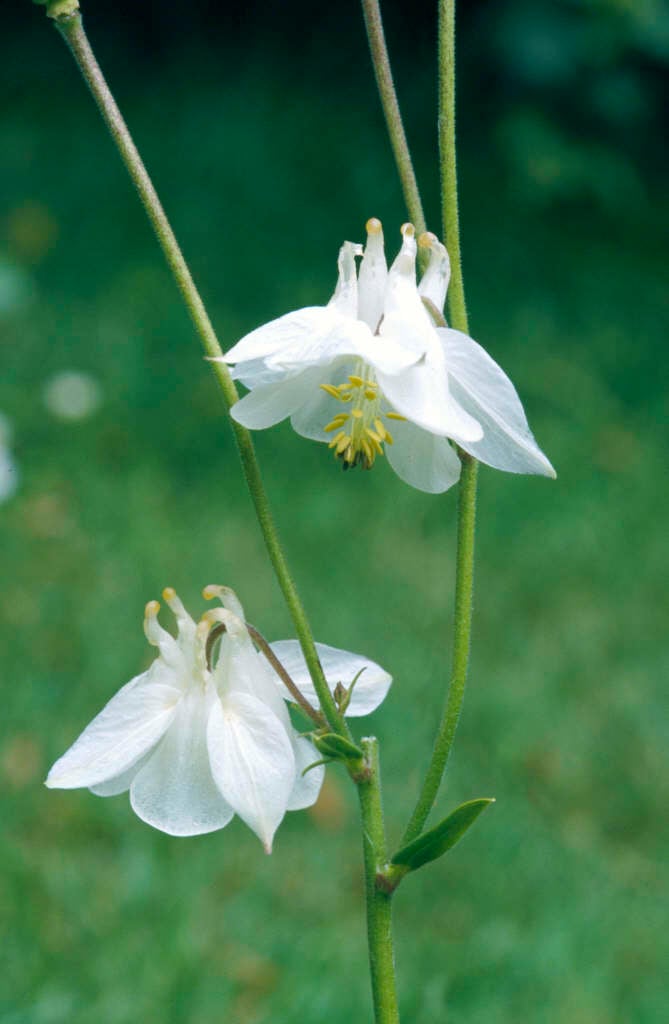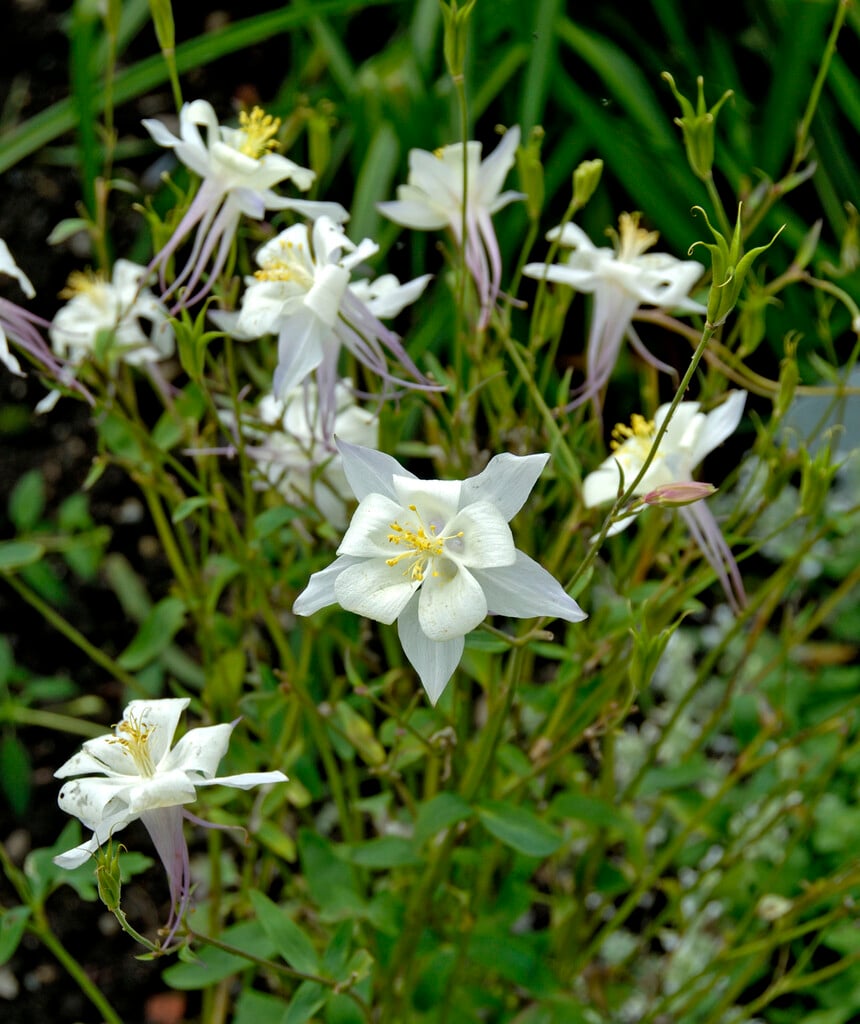Aquilegia vulgaris 'Nivea'
columbine 'Nivea'
A clump-forming, upright plant to 80cm, with divided, light green leaves and abundant, pure white flowers 5cm in width, with short, curled spurs
Size
Ultimate height
0.5–1 metresTime to ultimate height
2–5 yearsUltimate spread
0.1–0.5 metresGrowing conditions
Moisture
Moist but well–drainedpH
Acid, Alkaline, NeutralColour & scent
| Stem | Flower | Foliage | Fruit | |
| Spring | White | Green | ||
|---|---|---|---|---|
| Summer | White | Green | ||
| Autumn | ||||
| Winter |
Position
- Full sun
- Partial shade
Aspect
South–facing or North–facing or West–facing or East–facing
Exposure
Exposed or Sheltered Hardiness
H7Botanical details
- Family
- Ranunculaceae
- Native to GB / Ireland
- No
- Foliage
- Deciduous
- Habit
- Clump forming
- Genus
Aquilegia are clump-forming herbaceous perennials with long-stalked, ternately divided basal leaves and erect, leafy stems bearing bell-shaped flowers with spreading, coloured sepals and petals with spurs, on branched stems
- Name status
Accepted
How to grow
Cultivation
Grow in fertile, moist but well-drained soil in full sun or partial shade
Propagation
Propagate by seed sown in pots in a cold frame as soon as seed is ripe or in spring. It can also be propagated by division in spring but the plant will be slow to recover
Suggested planting locations and garden types
- Cottage and informal garden
- Wildlife gardens
- Cut flowers
- Flower borders and beds
- Underplanting of roses and shrubs
Pruning
Cut back foliage affected by fungal diseases
Pests
May be susceptible to aphids, leaf-mining flies and sawflies
Diseases
May be infected by powdery mildews and aquilegia downy mildew
Love gardening
Sign up to receive regular gardening tips, inspiration, offers and more
View our Privacy Policy
Get involved
The Royal Horticultural Society is the UK’s leading gardening charity. We aim to enrich everyone’s life through plants, and make the UK a greener and more beautiful place.

